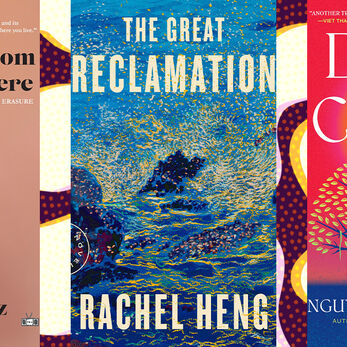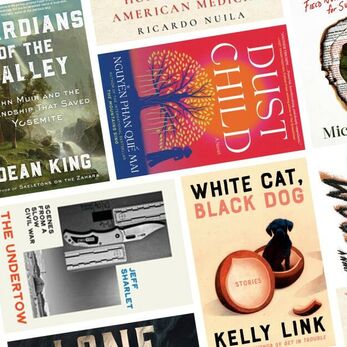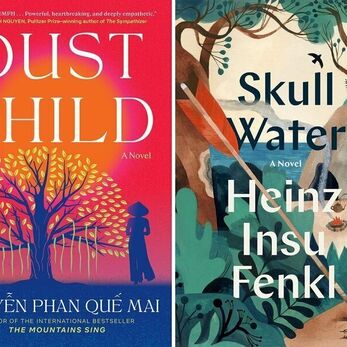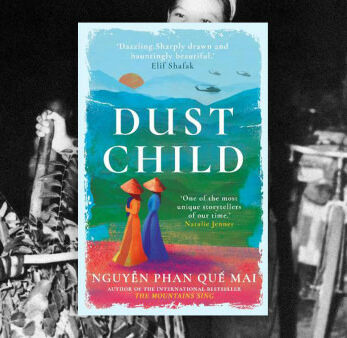“I’m always homesick for Vietnam. To write is to return home. That's why I had to bring Vietnam alive onto the pages. I had to hear the people speak, I had to listen to the music, to the language; I had to smell the food, see the landscape — that's my way
“I’m always homesick for Vietnam. To write is to return home. That's why I had to bring Vietnam alive onto the pages. I had to hear the people speak, I had to listen to the music, to the language; I had to smell the food, see the landscape — that's my way of returning home. Whenever I’m homesick, I just return home via my writing.”
Nguyễn Phan Quế Mai explained this motivation for writing her newest novel Dust Child after she had literally returned home. We were sitting together in the lobby of the Hotel Majestic, discussing her book in one of the places it was set.

I first met Quế Mai more than five years ago in a coffee shop on Pasteur Street to write a profile on her. While back then, her novels were certainly already in progress, she was known to me and most of the English-speaking world as a poet and translator. It was surreal to join her last month to explore some of the settings of Dust Child, the follow-up to her international bestselling The Mountains Sing. As we walked around District 1, visiting locations where some of the book’s pivotal and heartwrenching moments played out, we had a chance to chat about her inspiration, process and purpose in writing the book and also listen to her read the corresponding passages.
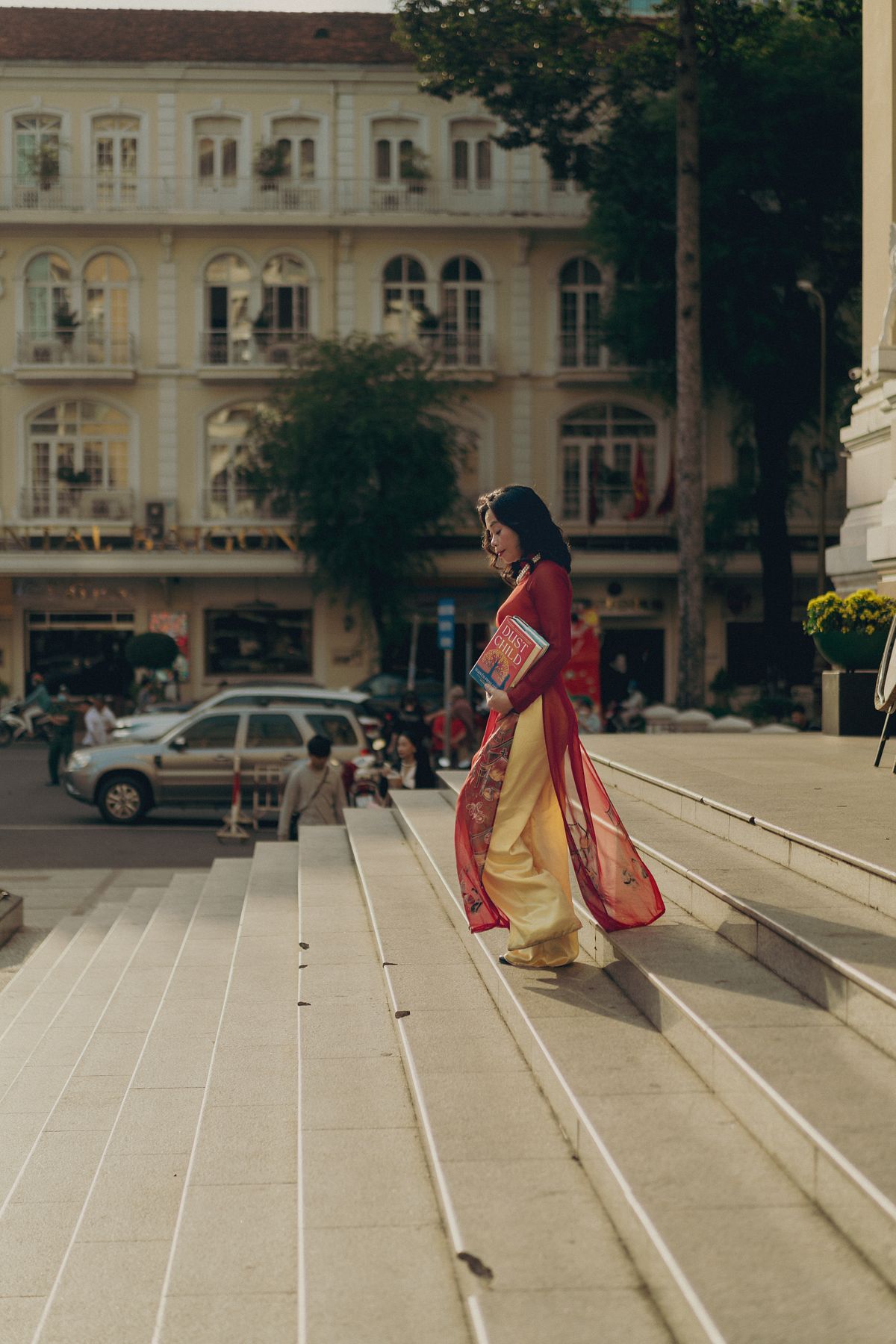
Saigon is home to Quế Mai. She studied and worked here for many years; her parents and brothers live here. Dust Child is an opportunity for her to reveal her love for the city as well as her appreciation of its complex past.
A poetic saga that deftly examines oft-marginalized elements of war, race, trauma and healing, Dust Child transports readers to Vietnam to witness the powerful role of compassion in the wake of humankind’s efforts to inflict great harm on itself. The novel contains three main storylines that leap back and forth in time, occasionally overlap and eventually intertwine: In search of confronting painful memories and regrets during the war, American veteran Dan returns to Vietnam in 2016 with his wife Linda as guided by a Saigon local, Thiên; Phong, a mixed-race, or trẻ lai, individual from Bạc Liêu struggles to find a way to lift his wife, Bình, and children out of poverty; and Quỳnh and Trang (Kim), two teenaged sisters who move to Saigon during the war with America to make money for their family.
Saigon Central Post Office
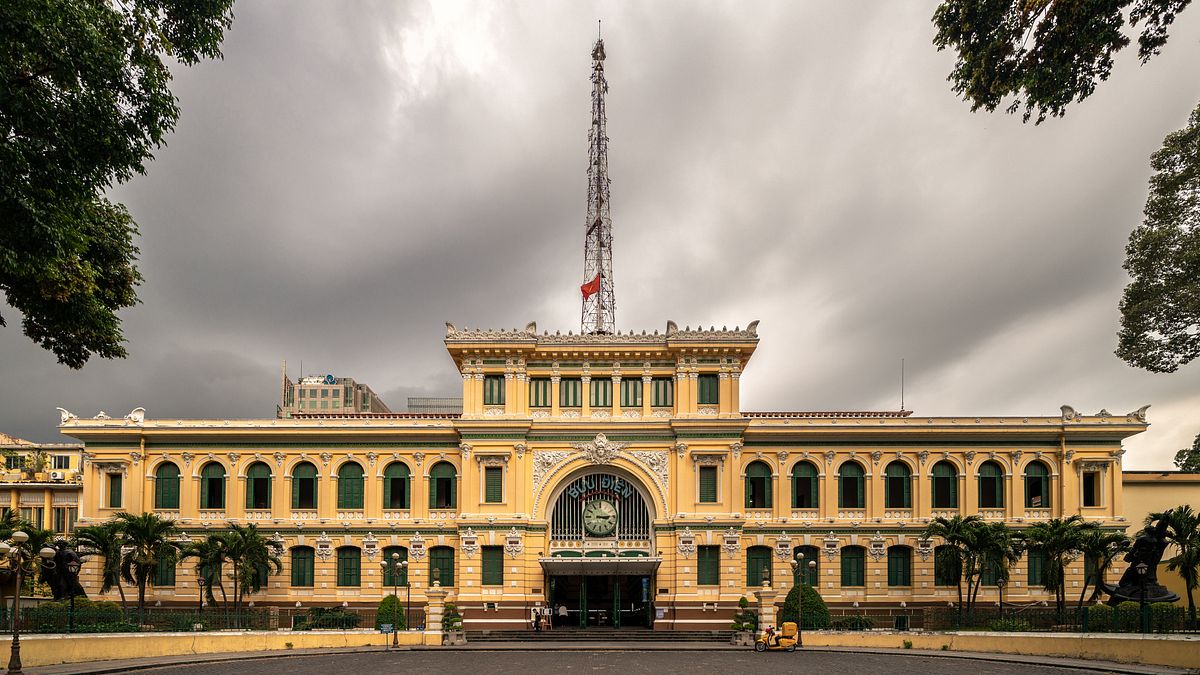
“That’s Sài Gòn Post Office, built in 1886,” Thiên answered.
“It looks French, very French,” said Linda.
“Yes. It was constructed when Việt Nam was part of French Indochina, originally designed by Gustave Eiffel, whose company built the Eiffel Tower. Later the building was reconstructed by other French architects.”
“Really?” gasped Linda.
“Gustave Eiffel had an office in Sài Gòn. He also designed Long Biên Bridge in Hà Nội.”
Dan studied the arched windows and the intricately decorated façade. He’d seen them during the war but hadn’t cared.
“I had no idea,” Linda said, taking off her sunglasses, admiring the building. “Gustave Eiffel also co-designed the Statue of Liberty, Mr. Thien.”
“I want to see the Statue of Liberty and the Eiffel Tower before I die. But I need a job that pay better.”
Dan almost laughed. How clever Thiên was, hinting about a big, fat tip at the end of the tour.
They crossed the road. Dan watched the people streaming in and out of the post office. If Kim was in Sài Gòn, she must come here from time to time.
As Linda approached the stairs leading up to the post office, Thiên signaled Dan to stop. He waited until Linda was out of earshot, then lowered his sunglasses, looking at Dan in the eye, his scar twitching. “I think you don’t need a guide. If you do, I don’t care. Today is my last day working for you.”
When American veterans ask Vietnamese about the war fifty years ago, a common sentiment shared is that it’s over, it’s the past. Such a comment seems aimed at reassuring the Americans that they are welcome in Vietnam, that blame will not be placed on their shoulders, and the focus should be on looking forward to a harmonious and fulfilling future together. I think that sentiment is truthful. But such a simplification of the past being gone and buried threatens to ignore lingering fears, hostilities or traumas that must be overcome for a mutual future to be pursued as healthily as possible.
This passage at the Saigon Central Post Office, which occurs about halfway through the novel, reveals Dan’s lingering mistrust as he assumes that their guide is scheming to profit from him. Quế Mai shared that via Dust Child she hopes to bring about “healing for people who were impacted by armed conflicts and separations.” She said: “My stories are human stories, aiming to bring people together by fostering empathy.”


But before they can come together, Dan and Thiên must admit lingering hostilities and address them. Quế Mai explained: “To write these books I had to overcome my own fears because these topics I’m writing about are difficult, not often written about. But I think someone needs to write about them. Unless we confront difficult issues, we cannot generate dialogues that foster healing.”
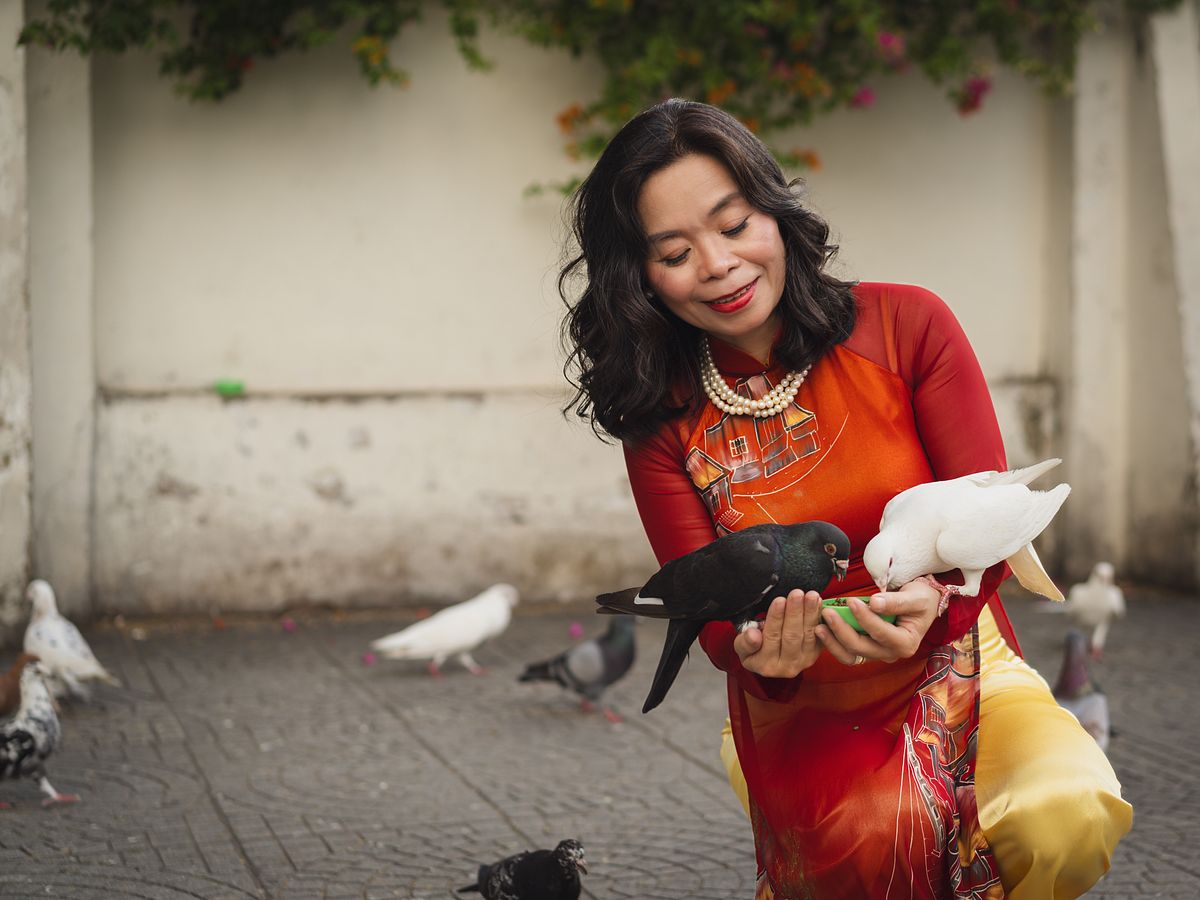
This scene is crucial in illustrating how Dan has unresolved issues when it comes to his expectations for how the Vietnamese will treat him. Likewise, Thiên, a former soldier who fought alongside the Americans, must examine how he understands the many American veterans that are returning to his country. Their differences come to a more dramatic head later, but this moment helps establish that everything isn’t as calm and happy as everyone may wish it to be, and healing is a difficult process.
April 30 Reunification Park
“The grass of the 30th of April Reunification Park was wet from the evening rain. A cool wind cut into Phong’s face. He took off his shirt and brought it to his nose. Bình had ironed it before their departure to Sài Gòn. He inhaled her touch. He hoped she’d gotten home safely with the children and hadn’t run out of money along the way. He wished he had made up with her before saying goodbye, told her he was sorry. When Bình agreed to marry him, people whispered that she only did it for the chance to migrate to America. They were wrong. He knew she loved him.
He used to believe that he didn’t deserve love because his life was cursed. He used to believe that his parents had done something unspeakable and that he was being punished for it. The luck of his life had been meeting Bình. Her faith in him had enabled him to regain his confidence. Yet for years, he’d feared that she was just a beautiful illusion; that he would wake up to find her gone.”
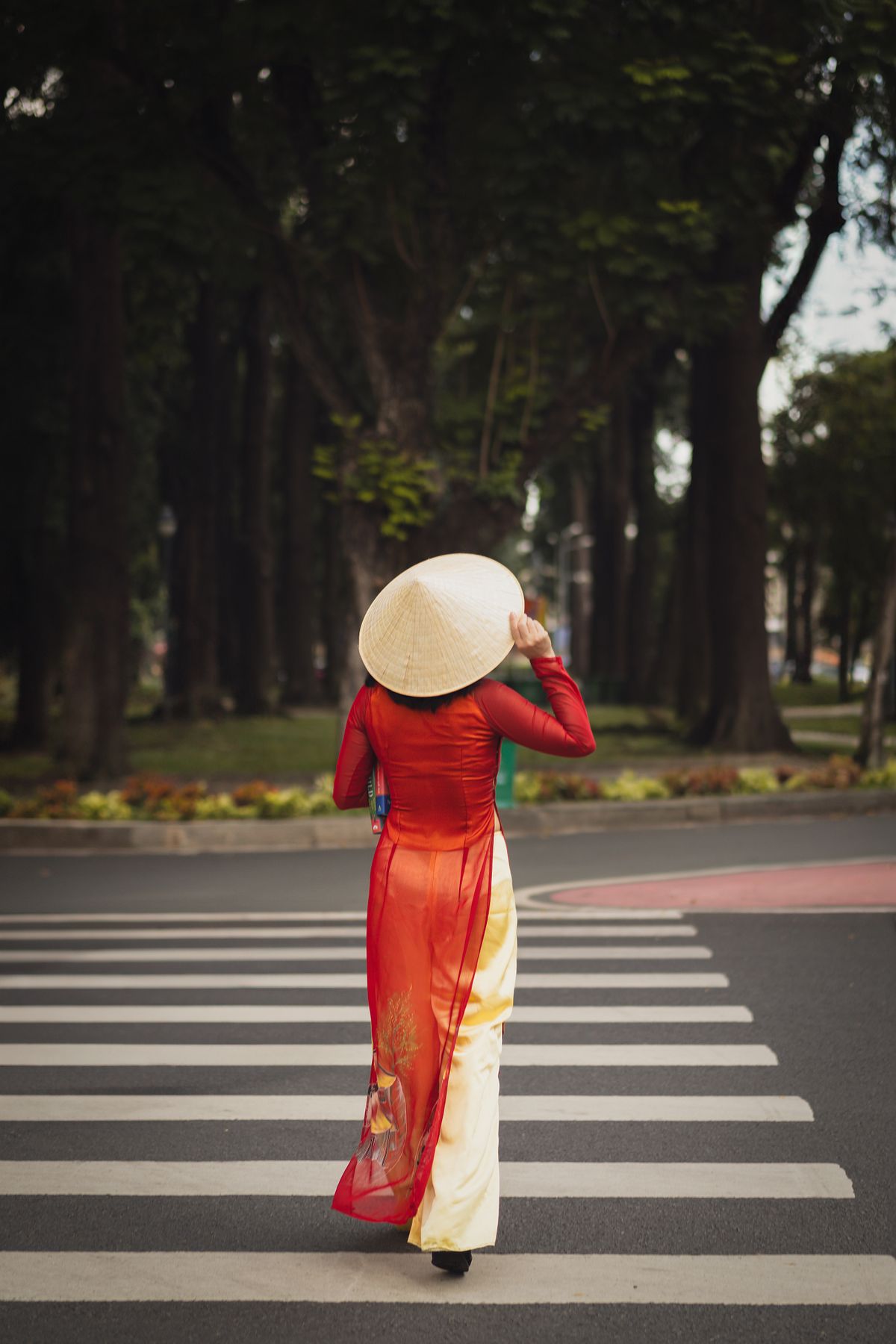

Vietnamese voices are underrepresented in global literature and Amerasian characters are particularly absent. Many foreign readers of this novel will not even know that term, though the concept will make sense once they consider the frequency of American soldiers and Vietnamese women getting together during the long war years. Phong’s story brings to life the painful discriminations and hardships these mixed-race individuals faced after 1975 and the important issue that continues to affect the country today.

To write from the perspective of characters with different backgrounds, experiences, genders and races, Quế Mai performs a staggering amount of research including extensive interviews. For example, to give Dan, a white man, a compelling and realistic voice, she spent time with American veterans, accompanying them on their visits to Vietnam and to homes of former enemies. It’s a powerful inversion of the far-too-frequent instances of white men writing from the perspective of Vietnamese women. Similarly, for Phong, Quế Mai relied on numerous interviews with Amerasians and her many years assisting Amerasians in their search for their parents as well as research via published oral stories, memoirs, essays, documentaries, and films.
"The Amerasian character in my novel was abandoned at birth, is illiterate and needs to seek his parents and his identity. Inspired by real-life stories, I was determined to write Phong not as a victim, but as someone with agency: Phong does not let tragedy define him; he fights against racism and prejudices; he assists those who are being scammed; he earns his honest living by doing all types of job. He celebrates life by being a gardener and a musician. Phong’s love for his wife and children offers them hope for the future," she explains.
Quế Mai’s novels are exceedingly generous and hopeful, looking to the best possible outcome that we might achieve with effort and the right heart. Phong’s character, while far from perfect, exemplifies this quality. This passage expresses how hope, even during the most stressful and desperate times, is possible. The love and beauty inherent to the world can lift people out of the most dire states.
Bánh Mì Như Lan
“Bánh Mì Như Lan was similar to the eateries Kim used to take him to, only bigger and more crowded. Sitting on a corner of a busy crossroad, it was filled with noise and packed with people. Instead of doors, it had counters selling many types of dry and cooked food. Customers on motorbikes drove right up to the counters to buy food without even turning off their engines. Behind the counters were Formica tables and plastic chairs. Linda wrinkled her nose, eyeing the rubbish scattered on the floor. Thiên assured them that such a place sold authentic food. He ordered for them and soon the waiter placed the food in front of them: crunchy baguettes stuffed with thinly sliced roasted pork, pate, pickled vegetables, spring onions and coriander, plates of fresh and fried spring rolls, and bowls of steaming noodles.”
Quế Mai may be a world-famous novelist now, but she will always be a poet, first and foremost to me. This passage’s simple depiction of food served in an iconic Saigon bakery showcases her subtle ability to create an evocative scene with precise images and colorful descriptions. More startling metaphors and graceful descriptions exist elsewhere in Dust Child, but here she brings a novelist’s restraint to her poetry.
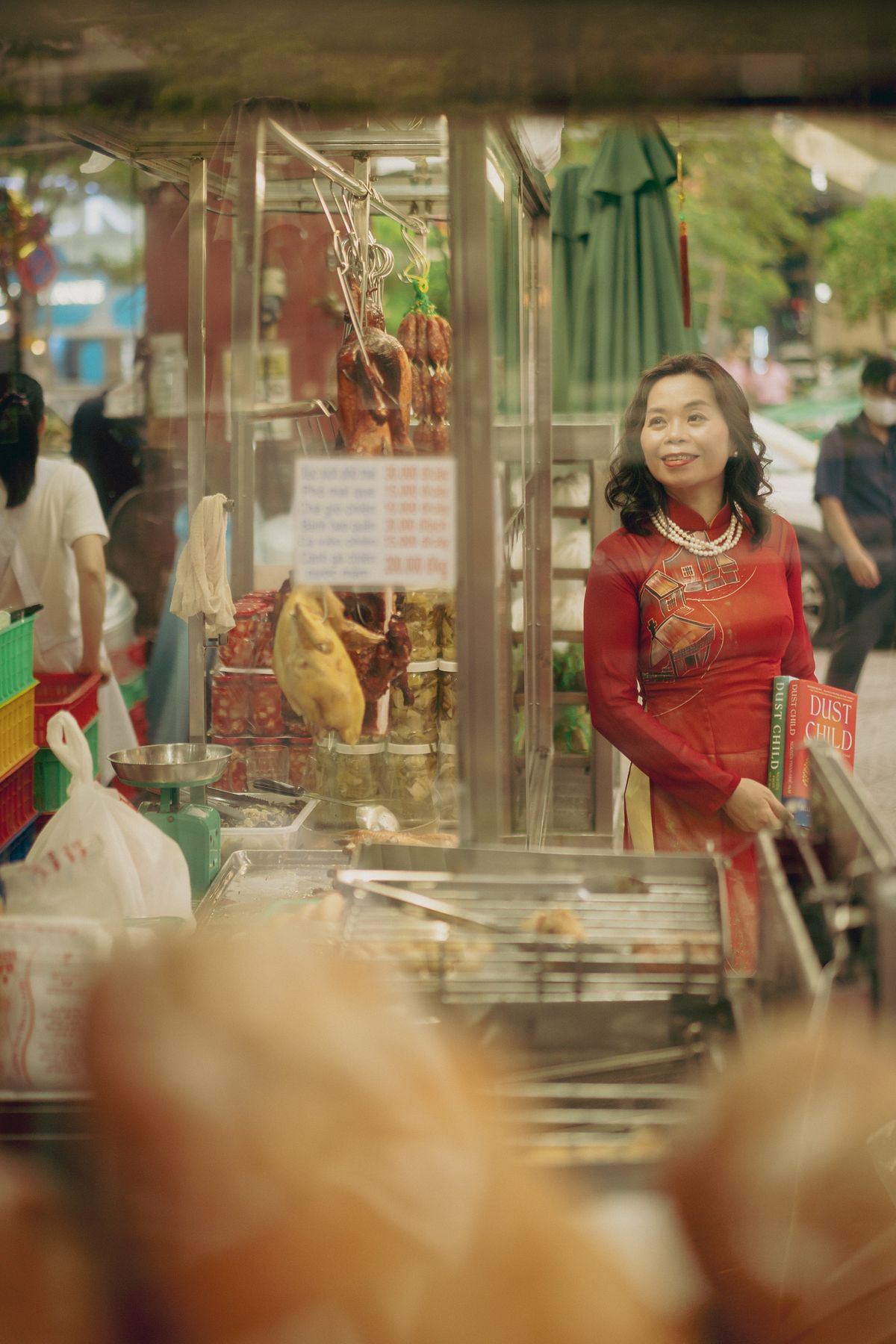


In a previous article written for Saigoneer, Quế Mai articulated how love and food are extremely intertwined in our memories. It is thus not surprising that a humble dinner of bánh mì transports Dan back 46 years to his time with Kim, the Vietnamese woman he was dating while stationed in Saigon. He returns to Vietnam to confront certain traumas, but he doesn’t seem prepared to confront recollections of happiness and the complexities such an emotion ushers in. This scene is one of the first times that theme emerges and it will remain one of the most powerful elements for the rest of the novel.
Hotel Majestic
Hotel Majestic looked as magnificent as ever, with its domed glass windows, its elaborate entrance where a guard stood. Painted a pale yellow, the building now has a bright red Communist flag flying above its name. He gazed at the rooftop, recalling that it had one of the best views of the city. He had to take Linda up there, tell her tales about the foreign journalists who used to hang out at the rooftop bar during the war.
To the right, Tự Do — the Street of Freedom —, now called Đồng Khởi—the Street of Uprising— stretched out before his eyes, lit up by colorful lights. Were some of the bars still there? During his final month here, he’d been a frequent customer. The girls had been younger than Kim, undemanding and not pregnant.
“This hotel was built by a Chinese Vietnamese businessman in 1925,” Thiên gestured toward the Majestic. “His Chinese name was Hui Bon Hoa, but we called them Uncle Hỏa. He was once Sài Gòn’s richest man. His family constructed thousands of buildings, including the current Fine Arts Museum.”
“That’s amazing,” Linda said. “And how interesting that this hotel looks just like some of the buildings I saw in Paris.” Linda tilted her head, looking up to the lit windows of the higher floors.
As Linda mentioned French architecture, Dan thought about the terrible things the French had done to the Vietnamese. They’d colonized the country for decades, divided its people, caused the First Indochina War, which killed hundreds of thousands of people. Then he noticed how Linda’s innocent words had instantly snapped his mind to the subject of French colonialism. That was the thing about being here. In America, he could pretend that world history had nothing to do with his life. But as soon as he stepped back into the hot air of Việt Nam, he knew that notion was bullshit.
Dust Child jumps back and forth in time, often by chapter, but occasionally within a single paragraph via the character’s memories. In this scene, Dan experiences both present-day Saigon in all its dynamic glory as well as the dangerous, alluring Saigon of his war years. Such time travel makes reading the novel while in Vietnam particularly satisfying as one sees their own reality and a former reality mirrored back to them.
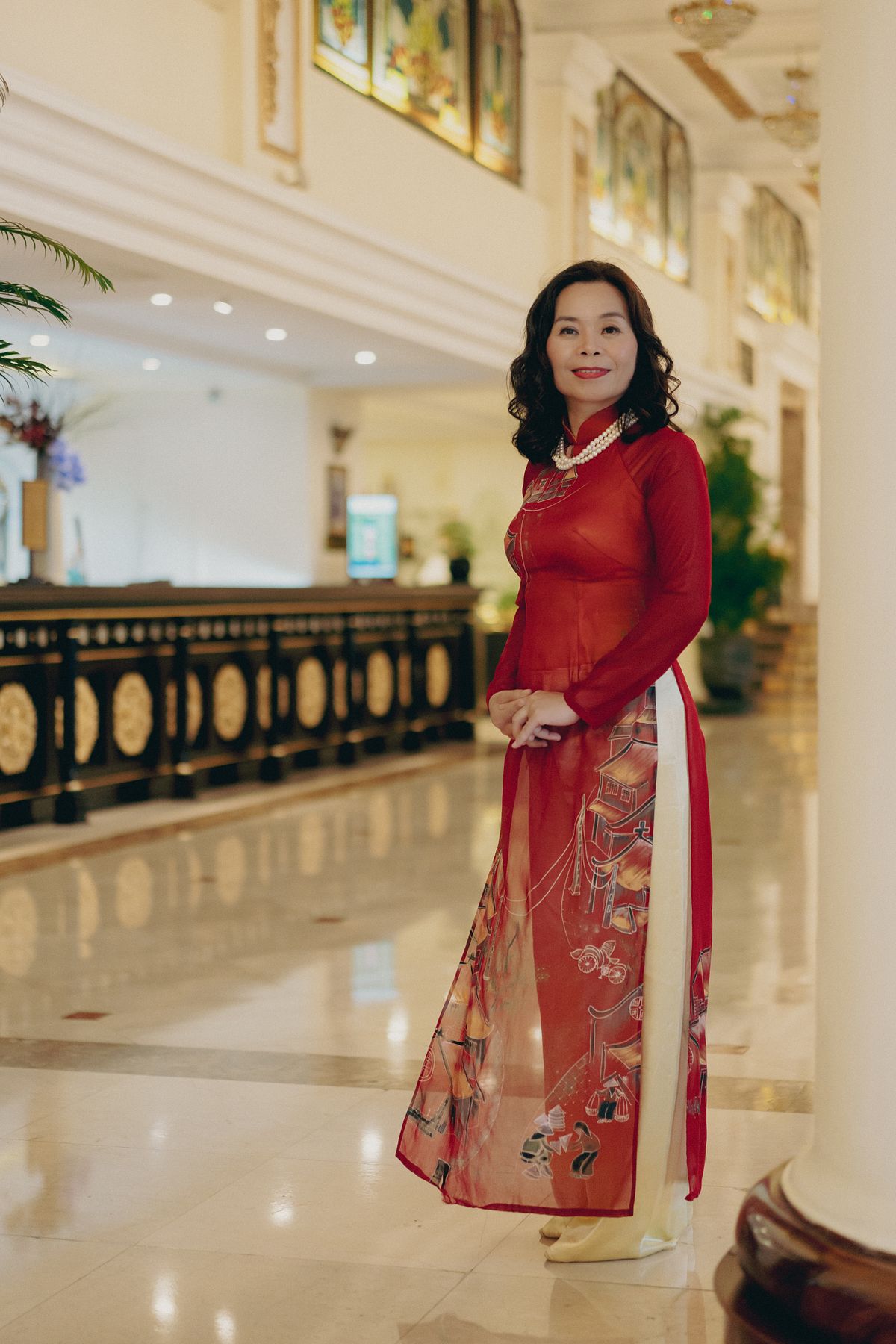
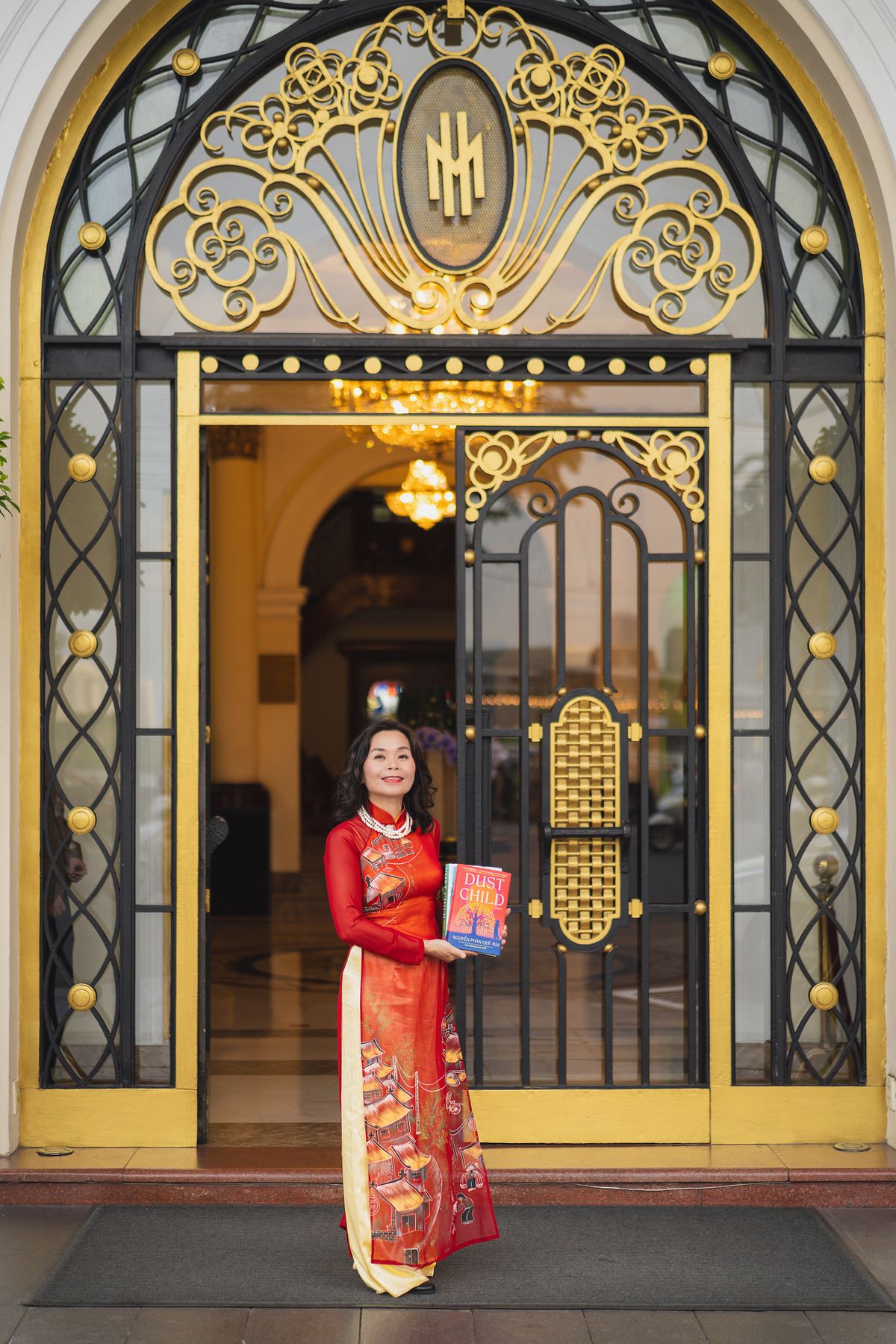
Regardless of which time period a scene occurs within, Quế Mai fills it with historical asides and references, as she does here with the story of Hui Bon Hoa. Of her writing process she explained: “As a reader, I aim to write a book that I’d like to read. So, I wanted to write a book that is authentic to my perception of Vietnam, Vietnam’s history and Vietnam’s present day. I included messages which are important for me, my point of view, my experiences and also messages which are impactful for Vietnamese people that I know”
The personal experiences she alluded to in this quote are even more important to this scene than readers would know, however. While sitting in the Hotel Majestic, Quế Mai explained that she had gotten married next door to this very hotel in 1999: her wedding reception took place at the Maxim Restaurant, which is also featured in the novel. Friends she’d made while studying in Australia as well as her in-laws had flown in for the event and were staying at the Majestic together with her and her husband-to-be. It is thus a cherished place of love-filled memories and given the emotions her book exudes, it makes perfect sense to have included it.
Quế Mai also noted that she set the novel at the Hotel Majestic because it is where Graham Greene wrote his classic The Quiet American. I can imagine people being moved by Dust Child the same way they are by that book. However, it’s worth noting that while in The Quiet American, Phuong, a young Vietnamese woman, was largely silent and relied on Western men to rescue her, Dust Child places two strong and independent Vietnamese sisters at the center of the story where they attempt to rescue American soldiers from the horrors of war.

I hope readers, when visiting Saigon, can retrace the steps we took that afternoon, if for no other reason than to spend a little more time with Quế Mai's beautiful words and the characters she created.



